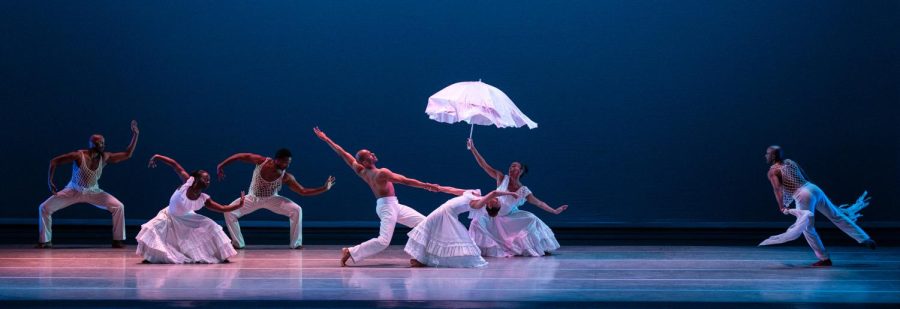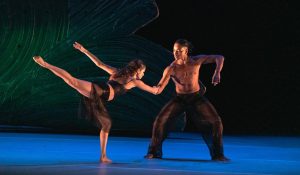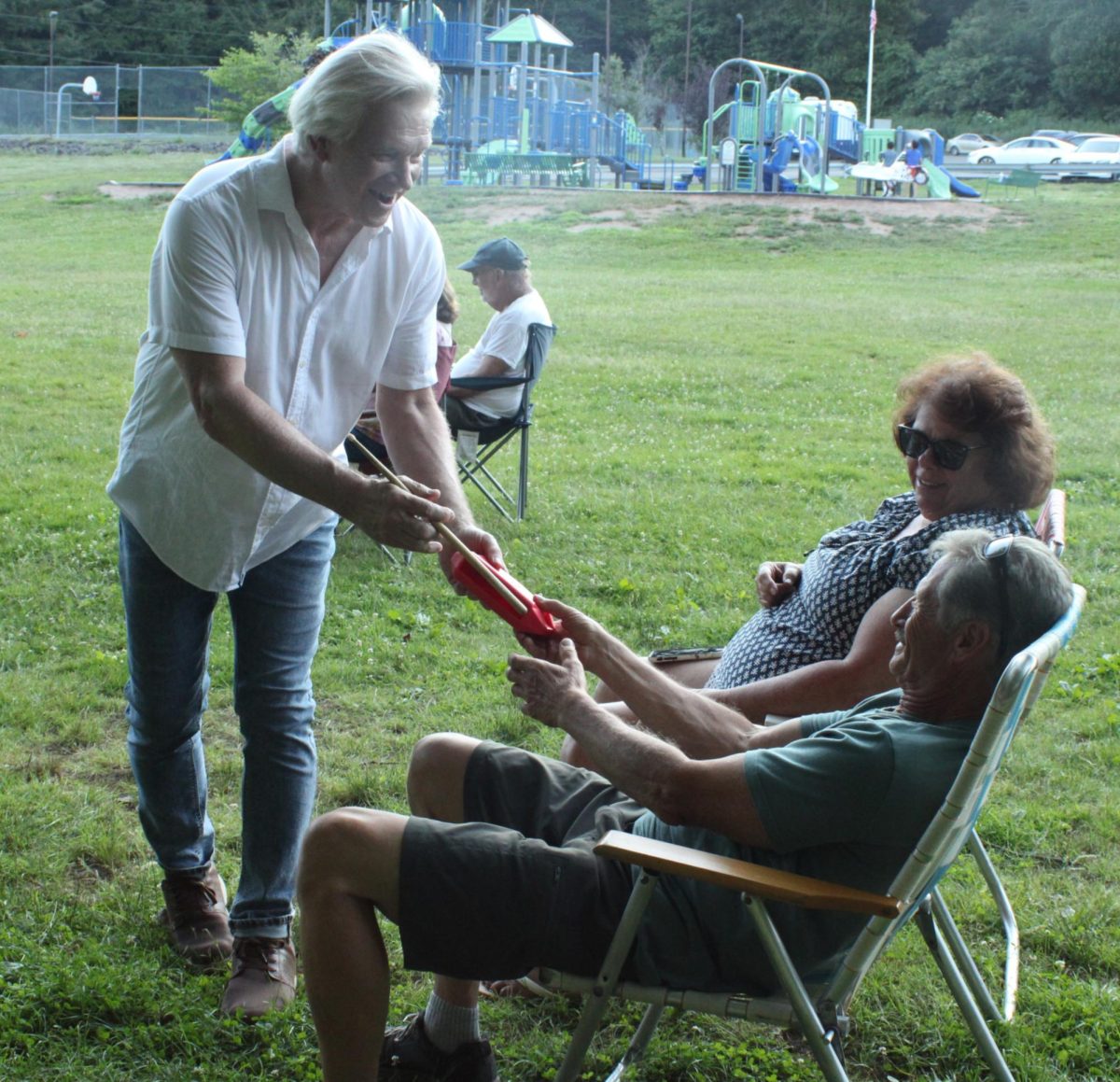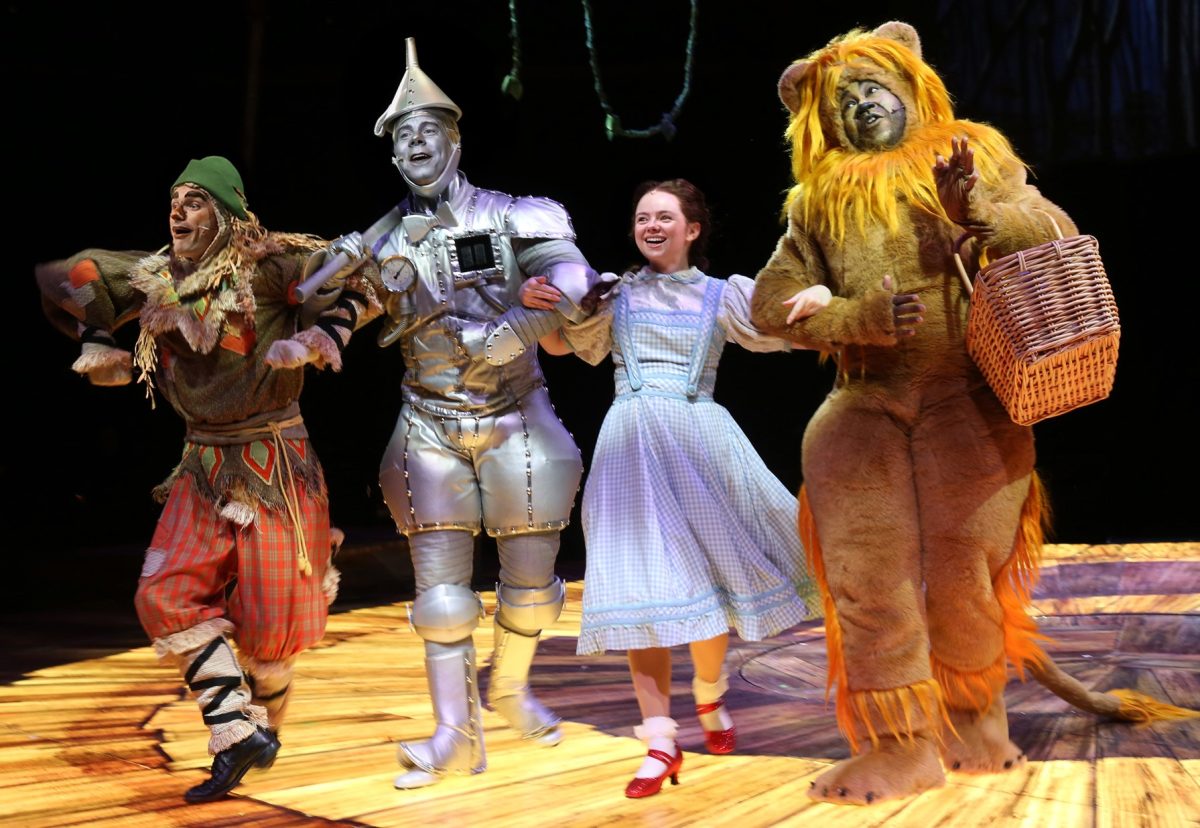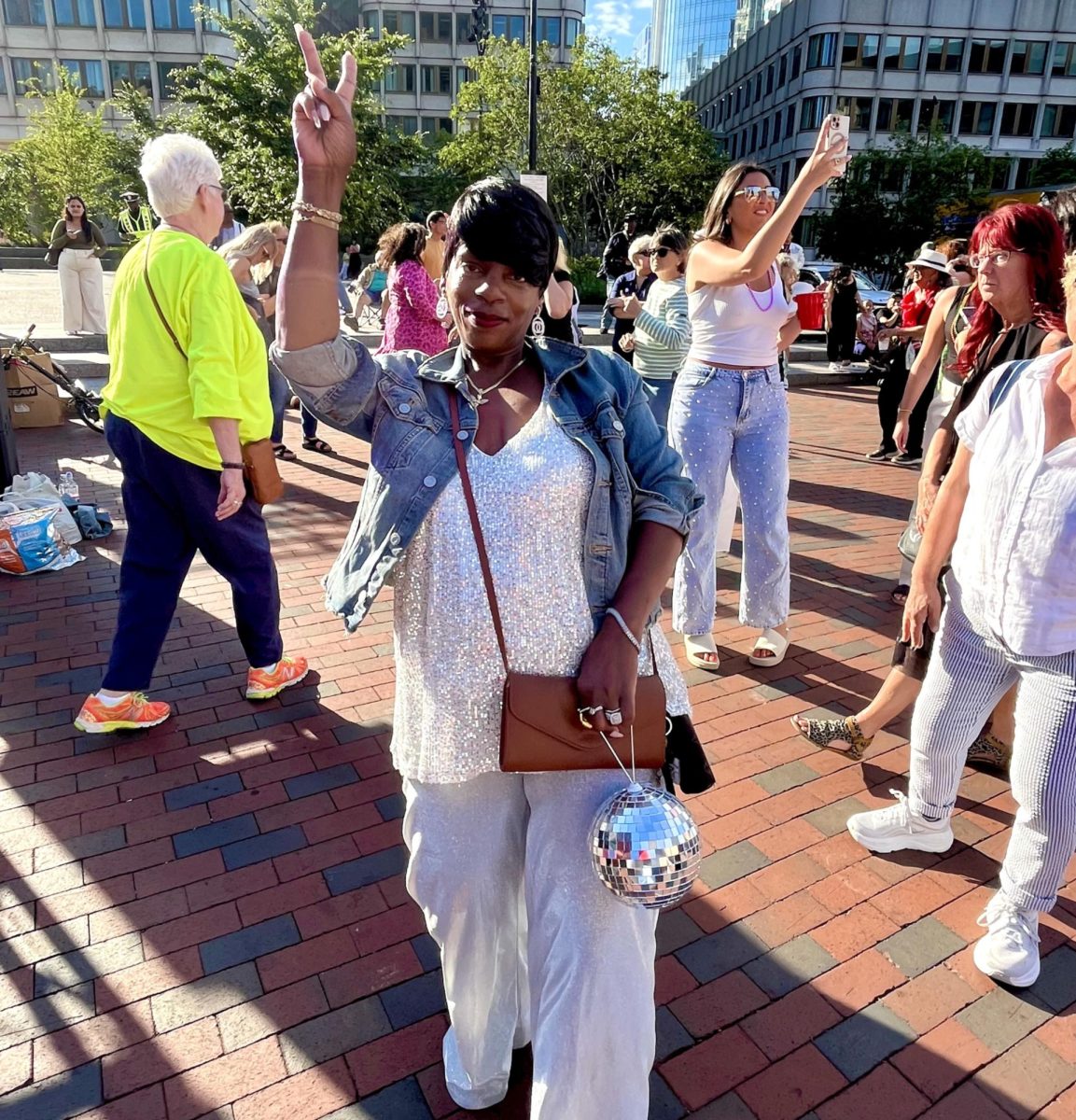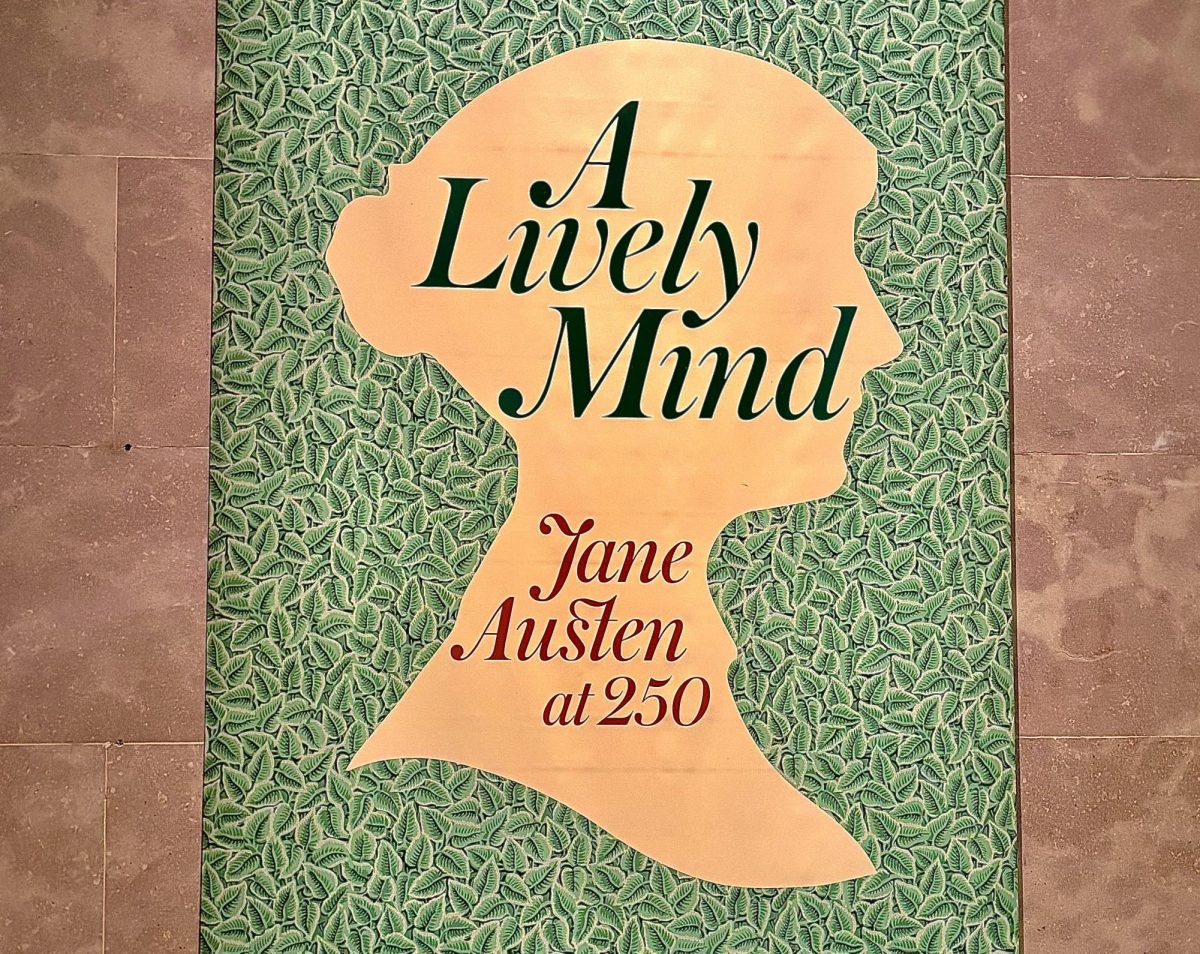Alvin Ailey American Dance Theater, together now for 65 years, remains breathtaking to behold in person
The Alvin Ailey American Dance Theater performed “Revelations” as part of its May tour stop at the Boch Center Wang Theatre in Boston.
May 14, 2023
From New York City to Asia, Rio de Janeiro to the White House, the Alvin Ailey American Dance Theater has entranced audiences with groundbreaking works that blend modern dance with diversity and Black culture for 65 years. Last weekend, May 4-7, the company continued this legacy with three powerful, storytelling works at Boston’s Boch Center Wang Theatre, part of the Celebrity Series of Boston, which brings a diverse set of artists to the city’s landmark venues.
The Alvin Ailey American Dance Theater was founded in 1958 by Black dancer Alvin Ailey. He coupled ballet, modern, and jazz dance with blues, gospel, and classical music, expressing themes of the Black experience in the United States and the world. Ailey died in 1989, having forever altered the trajectory of who can participate in dance, while receiving both Kennedy Center Honors and the Presidential Medal of Freedom.
The company was taken over by former company member Judith Jamison, who later chose Robert Battle to replace her in 2011. The company is now housed in New York City’s largest dance-oriented building, the Joan Weill Center for Dance, with two companies and two dance schools.
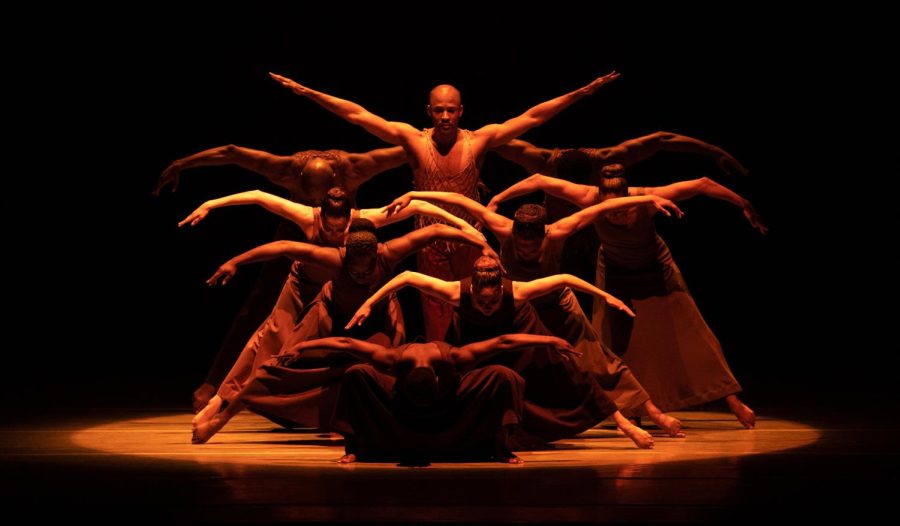
The first act of the Boston performances, titled “Roy’s Joys,” was choreographed by Twyla Tharp for her company in 1997, and premiered with Ailey in 2022. The work is set to the tracks of Roy Eldridge, a jazz trumpeter who played during the swing era in New York and Chicago. The Ailey dancers rotated on and off the stage to his music, merging the turns and leaps of ballet and modern dance with the fluidity of lyrical, the sauce of jazz, and a dusting of doo-wop and ballroom steps.
The majority of the dancers moved with partners, doing sensual combos with floorwork and odes to the foxtrot with their quick footwork. Adorned in vintage pants and flowy tops, the work evoked Harlem dance hall, and the dancers had personality that complemented Eldridge’s French vocals.
The work was not only special for its expert dance arrangement but for its twin embrace of both individuality and the bonds of couples. Each group of dancers, who danced together multiple times, had completely different interpretations of the same music, whether it was rooted in intimate floorwork, the devoted and poetic partnerwork of ballet, or playful steps partnered with big smiles. The combos showcased each dancer’s specific talents, but the range in styles also highlighted the intricacies and uniqueness of interpersonal relationships, and how the same feelings of love can be felt in different ways.
The next act, “Survivors,” was a tribute to Nelson and Winnie Mandela. Nelson Mandela, before serving as president of South Africa’s first multiracial democracy from 1994 to 1999, was a fierce advocate against the country’s apartheid government, which established the land’s white minority as the ruling class by law. He was sentenced to life in prison for conspiring to overthrow the government in 1962 and remained incarcerated until 1990, when he was released by a new, anti-apartheid government in an internationally televised act.
Ailey and Mary Barnett choreographed the work during his incarceration in 1986 to the drumming of Max Roach and the vocals of Abbey Lincoln. The dancers in the Boston performance hit every beat with intense kicks and poses to convey their widespread emotions. The leads playing Nelson and Winnie took part in a poignant duet between a set piece of prison bars, grappling with their love, loss, and pain. Eventually, Winnie led a beaten but persistent ensemble off the stage, exhibiting both the struggle to recuperate from the loss of Nelson and their refusal to give up.
“Survivors” should be praised for its balance of rigorous steps with movement as a form of expression, for being both a dance routine and a storytelling machine, and for interweaving a historical event with relatable themes. The loss of loved ones, oppression, and resilience are concepts familiar to individuals and groups of people in all walks of life. The work also explores the dynamic relationship of Nelson and Winnie, giving humanity to historical figures and platform to the feelings of the oppressed, as opposed to centering on Nelson’s career. In the post-apartheid era, Ailey’s work is a powerful example of the suffering that is possible to overcome.
The last work, “Revelations,” is the company’s staple piece that first brought Ailey to international acclaim in 1960. Combining blues, gospel, and song-sermons, the work shares how the African American community’s relationship with faith has evolved over the centuries.
The first act, “Pilgrim of Sorrow,” put the spotlight on enslaved people praying for a better future. Draped in simple dark attire, the ensemble number of “I Been ’Buked” featured expressive armwork as the dancers reached for the heavens, changed pace with the hymn, and experienced outbursts of modern movement to communicate their despair.
“Fix Me, Jesus” was a duet between Ghrai DeVore-Stokes and alternating dancers James Gilmer and Jeroboam Bozeman. Gilmer and Bozeman acted as what could be interpreted as a Jesus figure, engaging DeVore-Stokes in partner stunts in a fashion that supported and embraced her.
The next act, “Take Me To The Water,” displayed a baptism and embodied the spiritual meaning of water as a symbol of purity and life. Bedecked in flowing white attire, the dancers exhibited pride and excitement in one’s family with dignified footwork, effusive style, and grooving hips to soul music.

“I Wanna Be Ready” closed out the act with a solo from the alternating dancers Yannick Lebrun and Christopher R. Wilson, whose contemporary dance eased between tense and relaxed as the character expressed his feelings about death. The solo was filled with refined subtleties, down to how the soloist tended to raise himself at the word “Lord” and lower himself at the word “ready,” which implied death.
The last act, “Move, Members, Move,” illustrated the glory and importance of the Black church, and to women in particular. The act started with the gospel songs “The Day is Past and Gone” and “You May Run On,” where the women’s vintage yellow dresses and fans set the scene of a church in the 1930s and ’40s. The combinations included smooth use of dancing with chairs, presenting a poised take on the chair dance style that has become a landmark in classic Broadway shows and cabarets. The act finished with a Sunday celebration in musical theater dance spiced with modern and some swing to the soul song “Rocka My Soul in the Bosom of Abraham,” in which a male ensemble joined in as the audience clapped along in synch.
“Revelations” remains a breathtaking paradigm of what the company epitomizes. The styles of movement, from the modern dance, expressions, and balletic duets of “Pilgrim of Sorrow” to the footwork, contemporary ambience, and personality of “Take Me To the Water” and the joyous and cleanly-executed musical theater of “Move, Members, Move,” the choreography exhibits Ailey’s intended fusion of styles. The work additionally fulfills Ailey’s vision of sharing centuries of Black history, values, struggles, and pride, which has made the work treasured by generations.
With the performances in Boston of three distinct, skillful, and mesmerizing works over, the Alvin Ailey American Dance Theater will finish its tour in August in destinations from Edinburgh, Copenhagen, and London. The group will then return to New York City to resume its innovative dance-making and storytelling that has shaped its decades-long saga.
–May 14, 2023–

